Prairie Chickens – Part 1
Sunday morning, our alarm went off at 3:30am. We fell out of bed, got ready and were out of the house by 4:00am. We drove west about an hour and a half, turned down a dirt road, then parked and man-hauled portable wildlife blinds and camera equipment a quarter mile off into a field. We set up our blinds, readied our cameras on tripods, and waited quietly in the dark for for the show to begin.
We could hear their calls in the dark as they arrived for their spring morning ritual. At daylight, we began to take pictures.
Every spring morning, starting in late March and continuing through May, male Greater Prairie Chickens gather on the highest hilltops in the predawn. For the next 4 hours, they put on a display consisting of a variety of calls ranging from low booming sounds to raucous screams.
They stamp the ground, fly up into the air, and inflate bright orange sacs on their necks.
The coveted spot on the hill is the very top, and when not displaying, they fight each other to make their way there, and be the dominant male.
Much of the fighting consists of nothing but face-offs,
but occasionally it becomes physical with males scratching or biting, and pulling out each others feathers.
The goal of all this displaying and fighting is age-old:
The Females.
Above, a lone female, center, is courted by three males. The females are pale gray with none of the colorful markings of the males.
Unlike the males who arrive at the hill in the cold predawn, the females like to sleep in and then arrive after sunrise. They wander around the hill, observing the males, and taking notes. When they are ready to start a family, they will choose only from those males at the top of the hill, hence all the competition.
Watching the Greater Prairie Chickens is a great privilege and well worth the price of losing a little sleep. Once an abundant species, they are now rare or extinct in much of their former range. Loss of habitat is the cause.
Most people I know have never seen the prairie chickens in action, so I’m pleased to be able to share this early morning show with you. I took over 500 pictures and video as well, and I’m still sorting through it all.
Tomorrow I’ll share more pics and video too.

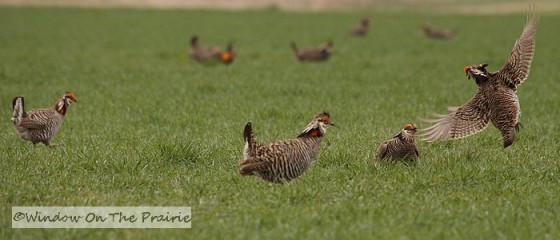
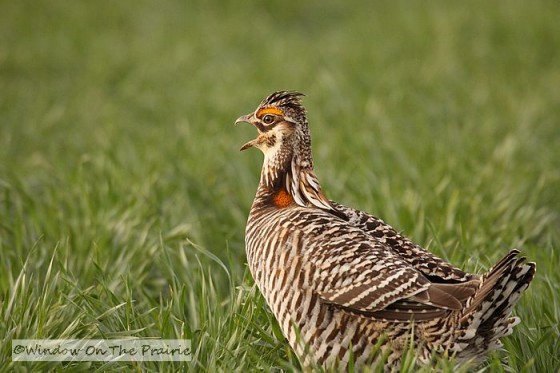
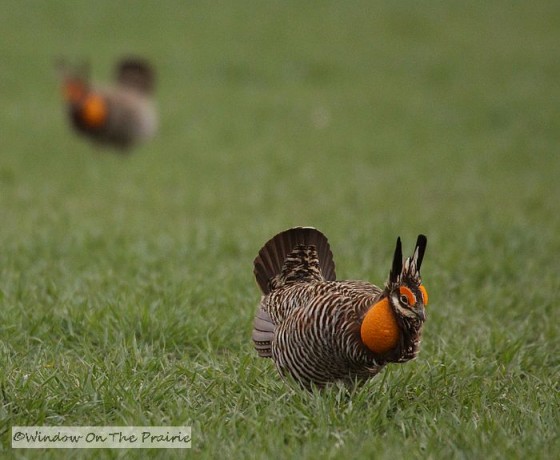
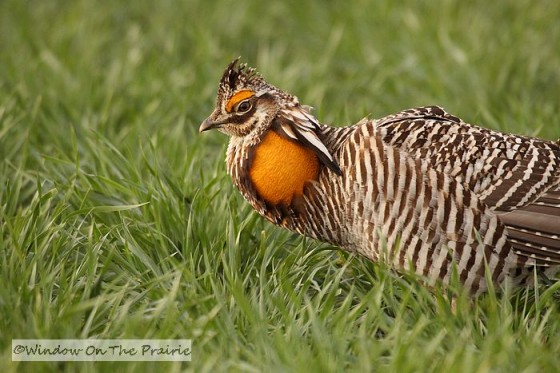
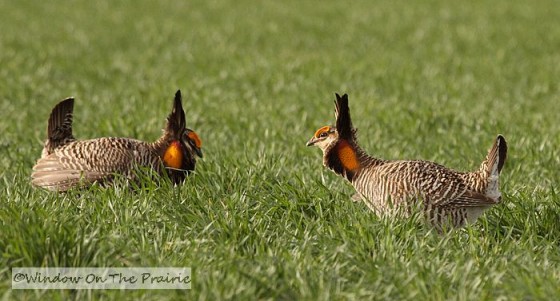
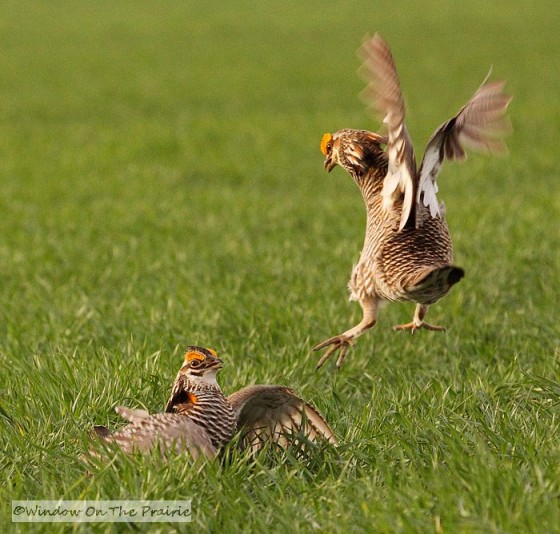
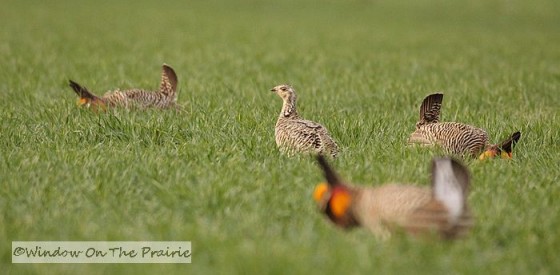

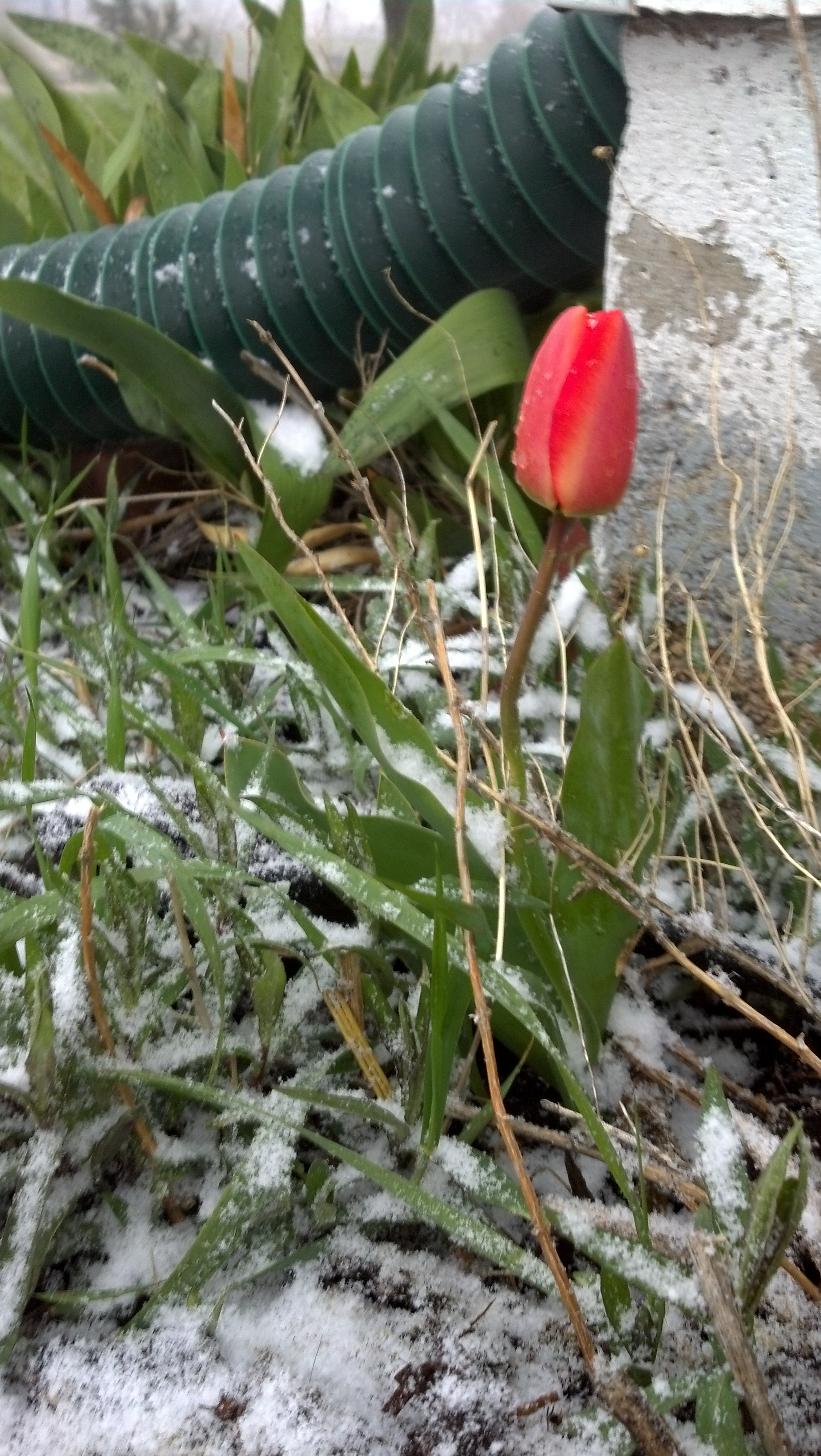
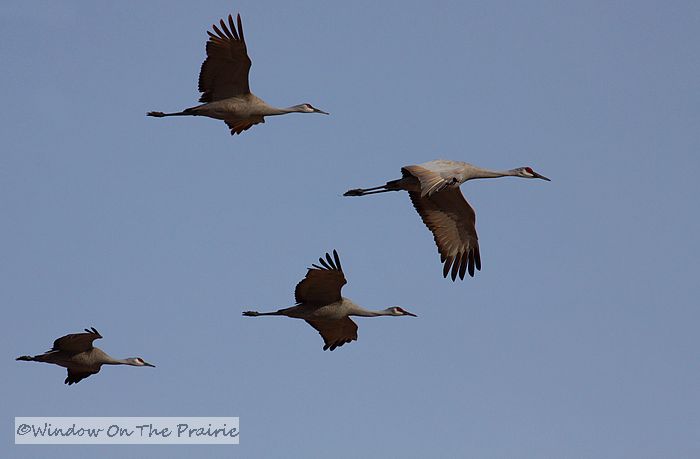
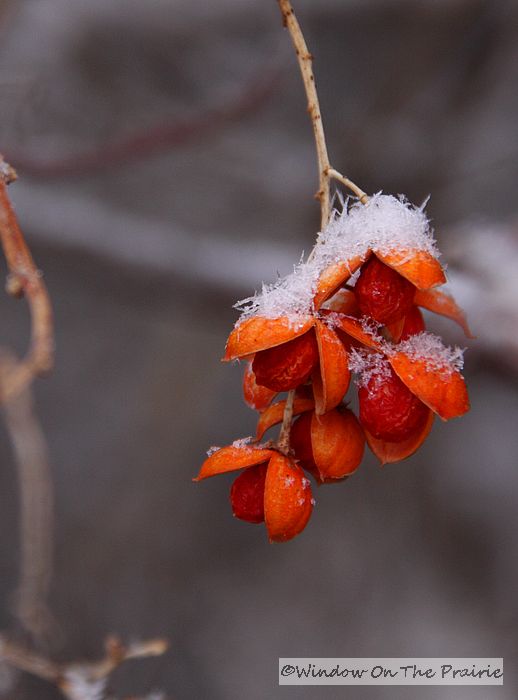
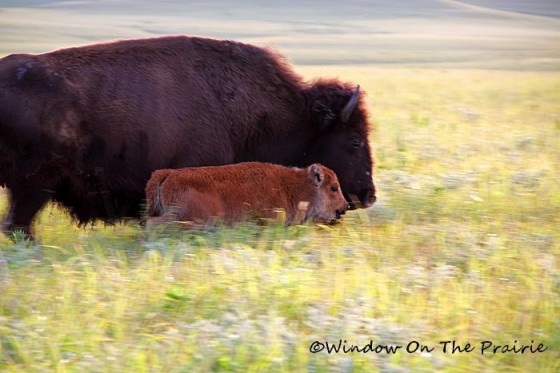
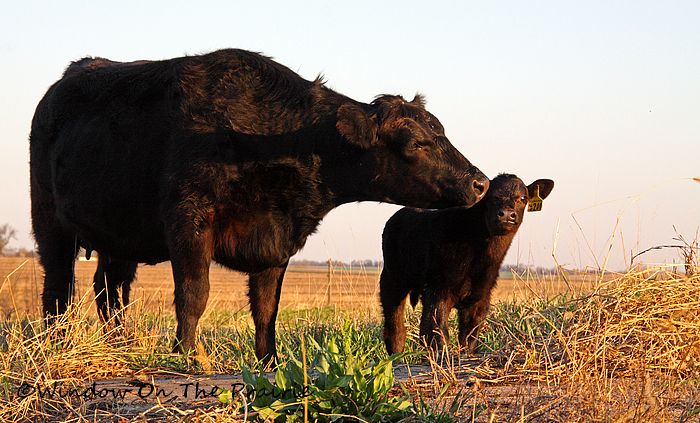

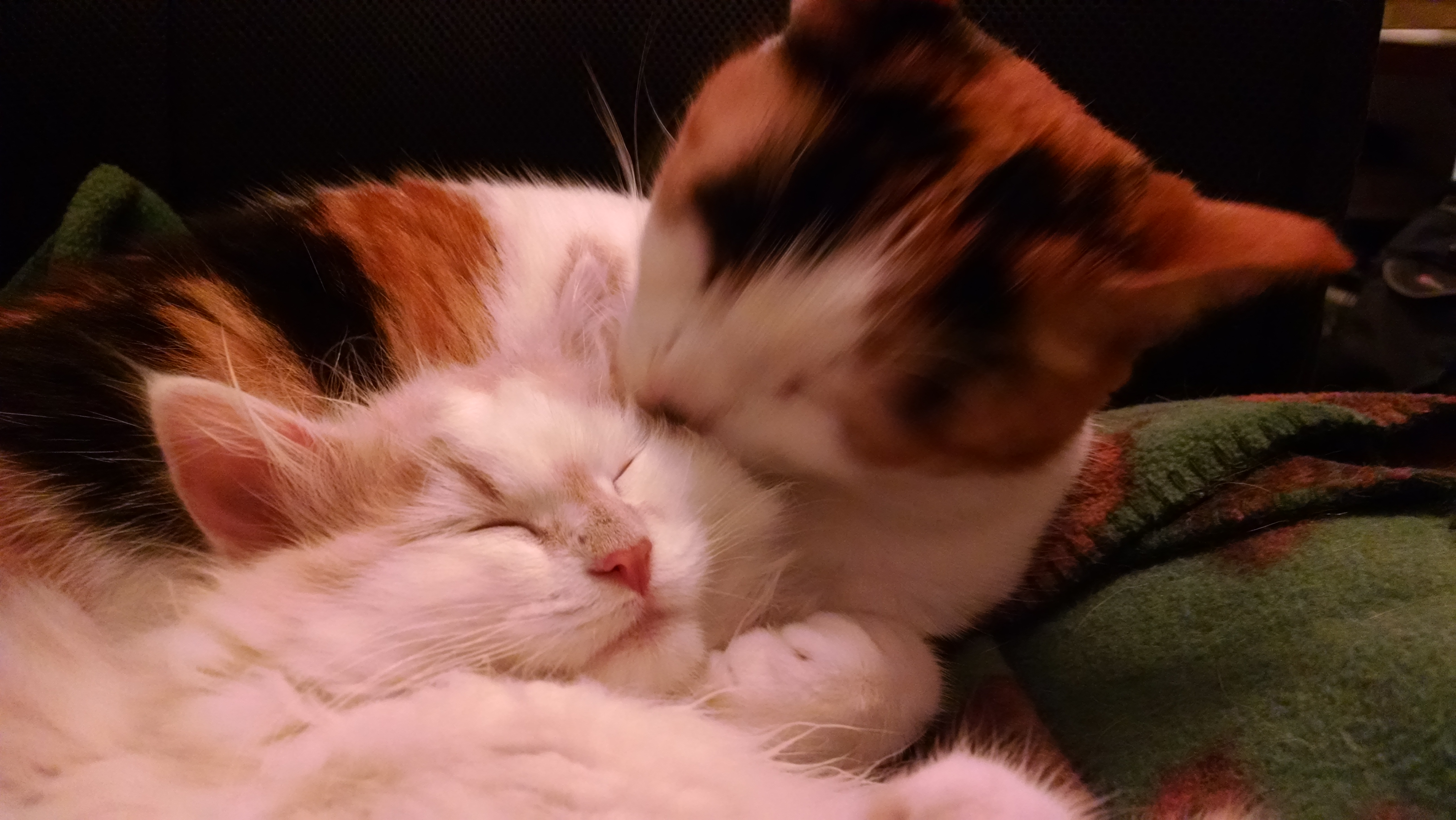
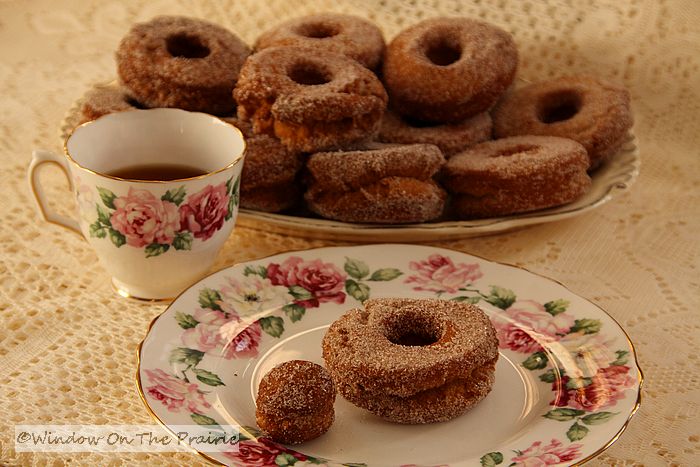
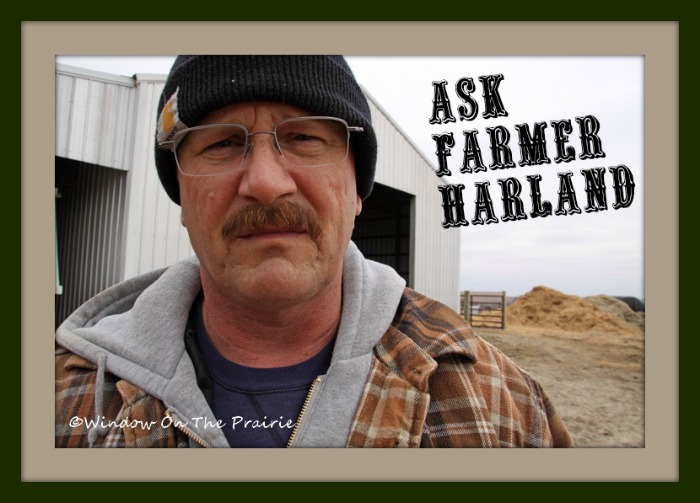
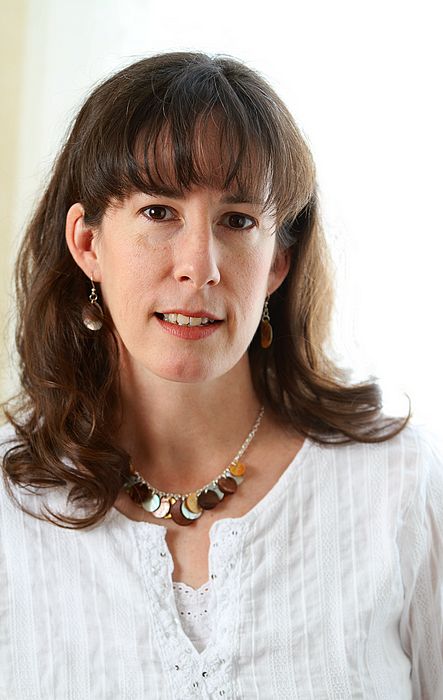


Great pictures! It took me some time to figure out how they got the horns made of feathers but I see them laying on the side of their neck when they are still. Love the orange “lobes” too. Of course the females are drab but worth fighting over. Great job! Thanks for sharing.
Hi Tina,
Yes, the horns are just a group of long feathers that they can raise or lower. Pretty neato.
Thanks!
Oh, wow!!! I’d have gotten up right with you to see the prairie chicken lek!! Maybe one of these days.
Sue,
I always feel tired and out of sorts for the rest of the day, but it’s well worth it, and we only go a couple days each year.
It’s a wonderful life experience.
Oh my…gorgeous photos. I love photographing birds.
Here in Washington State we have “grouse”…very similar, I think. I haven’t seen, or heard one for so long. We used to hear them all the time when we lived on our small farm…one of the sounds I miss. My body doesn’t miss the work, tho, lol.
Hi Lynn,
The Praire Chicken is actually a grouse and is related to the grouse you have there. Sad that you don’t hear them anymore there. We don’t have them here near our farm either. We have to drive 90 miles to find the nearest place.
I am so glad you are willing to get up that early to get these pictures. They are awesome!
Thank you Wendy!
This is great…..Thanks so much for sharing all of these neat things with us.
You’ve captured such great things. I’m still in awe of the frost flowers from some time ago.
There are such interesting things out there….and you’re seeing many of them. It’s wonderful!
Thank you Hound Doggy, and thanks for visiting too!
I enjoyed your pictures and the lesson on prairie chickens -what a neat thing to go see. I remember when I was a kid my Dad and his friends would go prarie chicken hunting. I’m sure I’ve eaten them in my younger days. I’ve not heard of anyone hunting them in a long, long time and now I know why.
Laura
Thank you Laura,
The early pioneers wrote in their diaries that they hunted and ate prairie chickens until they were tired of them. Must have been quite a sight back then when there were so many more of them.
The chickens really get into it don’t they? Those orange sacs would get any female excited. Great photos!!
Hi Darlene,
The orange sacs are certainly an eye catcher. One of their relatives, the sharp tailed grouse, has purple sacs. Really eye popping.
I’ve never even seen one of these buggers in person. This is fascinating! I learn so much over here with you. I truly appreciate you getting up early to capture this for us, too! I still haven’t gotten over the turkeys jumping for seed and above all, cows. I love the cows and calves.
Thanks for sharing so much with us!
Oh, you’re so welcome Kelly. I love sharing it with you too.
Wow…those are really cool. Never heard of a prarie chicken
haha…im even a farmer…too funny…they are beautiful..
thanks for the photos..
Hi Julie,
The sad thing is that even most people that live in the country have not seen them either. Too bad there are not more of them around anymore.
They really show the same characteristics of a common rooster. I didn’t see spurs on their legs though. Were they part of the pioneers diets? We have pheasants and turkeys here that people love to hunt.
Our turkey peeps are two weeks old. Cute, Huh?
Hi Mary,
The early pioneers wrote in their diaries that there were a lot of them around, and they hunted and ate them until they were sick of them.
Can’t believe the turkey peeps are that big already at 2 weeks. So cute!
Love those colors!
Very entertaining. I have never seen a prairie chicken but see how they got the name. Their behavior seems to be similar to peacocks and turkeys. Great photos. Hope they do not disappear. What a shame that would be.
Me too Glyndalyn, I hope they will make it for future generations.
Your pictures are wonderful! Thanks for sharing!
I am in awe! How wonderful! I have never heard of prairie chickens. I love the beautiful orange color at the neck of the males. I am always in awe of the vivid colors of male animals used to attract females. Your photos are absolutey fantastic…you should be doing a piece on prairie chickens for National Geographic! I love the mid air face off photo..it’s awesome!!
Hi Bonnie,
I don’t know about Nat’l Geographic, but thank you for you encouragement though. So glad you enjoyed seeing the chickens.
They really are beautiful with the bright orange! Your pictures are stunning. That blind must be very effective to be able to get that close.
Hi Teresa,
We have chair blinds, which are like canvas chairs that have a blind that pops up around them, so we can sit in comfort. They are camouflaged too, but quite honestly the birds are so involved in what they are doing, I don’t think they notice us much.
Wow! That is so cool. I have never seen prairie chickens befor. As usual your photos are outstanding.
Thank you Peggy!!